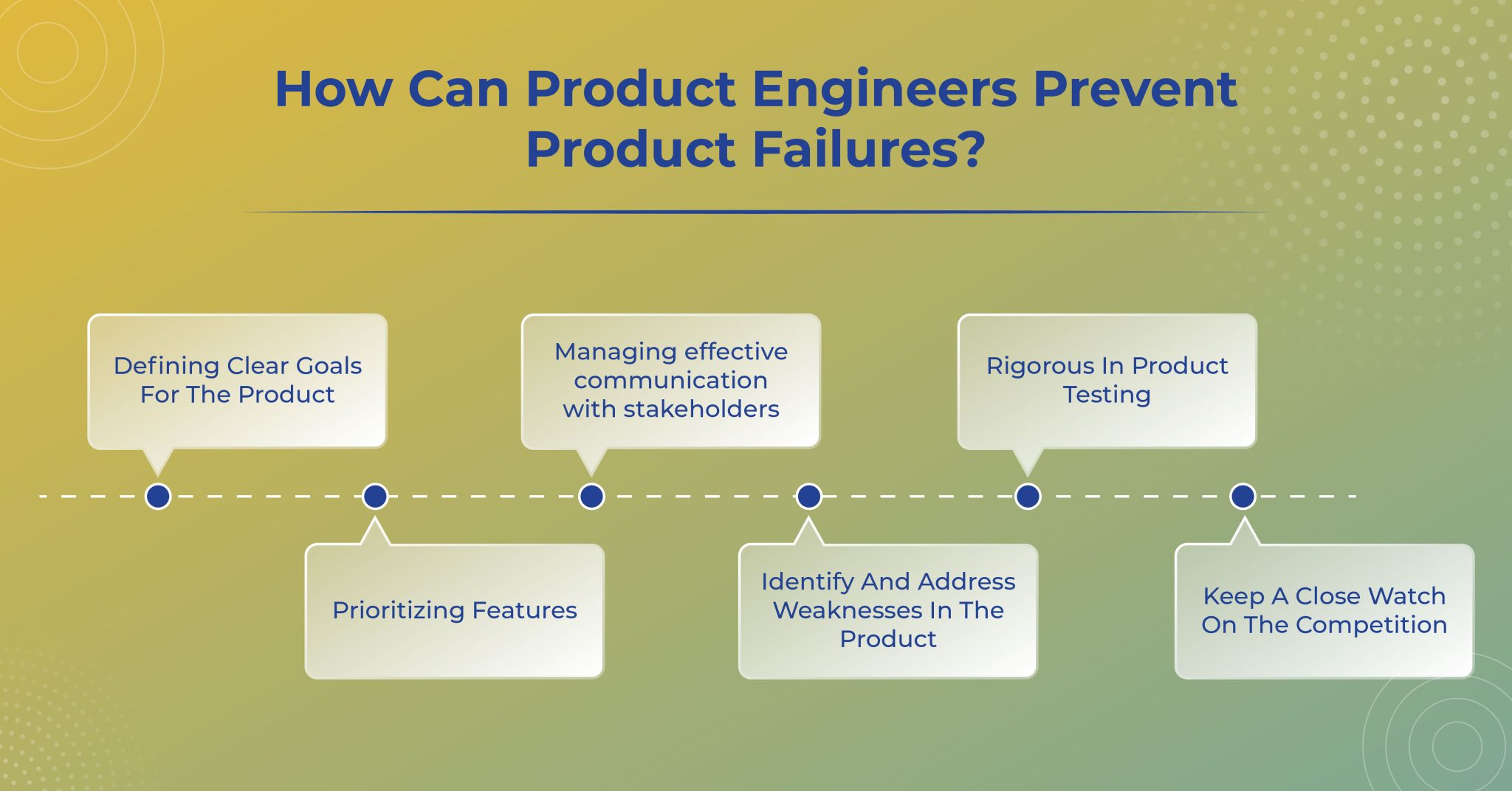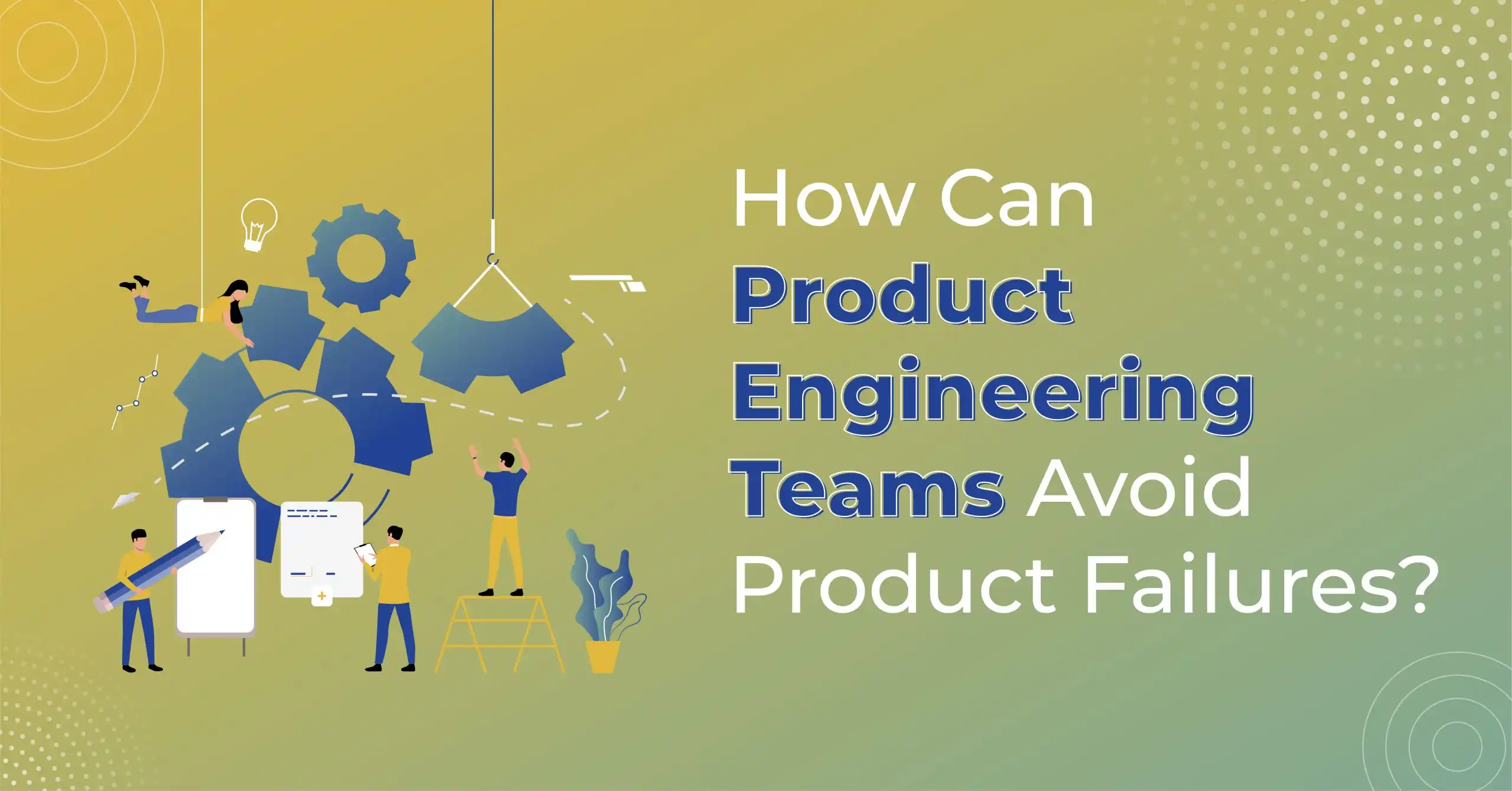Did you know new products fail at rates as high as 50% or even 95% in the United States and 90% in Europe? A product is said to fail when its presence in the market is unable to:
- Obtain the necessary market share to uphold its existence.
- Meet the anticipated lifecycle as determined by the organization.
The companies that shut down their doors due to failed products account for over 80% of the closing startups. In addition to losing jobs and money, this causes millions of dollars in losses. Some organizations have even been forced to lay off their staff and halt their sales due to financial losses.
Product engineers and business owners are encouraged to read this blog to learn about the causes and preventative measures of product failures to avoid them. Additionally, this blog highlights Covrize – a software development company specializing in product engineering and providing comprehensive solutions that help businesses build scalable products.
But do you know what product engineering is?
What is Product Engineering?
Product engineering is a detailed framework that guarantees businesses get the most value possible from a product throughout its entire lifecycle.
There are various phases of product engineering,

All of these steps guarantee that the final product is flawless and has long-term stability.
What is the role of Product Engineers?
A Product Engineer is a specialist in charge of creating both manufacturing procedures and industrial applications.
Product Engineers work closely with product development teams, this position transforms concepts into high-quality materials based on market research.
Product Engineers have some basic responsibilities such as;
- Creating superior product designs
- Articulating and defining product strategy
- Fixing problems and enhancing product performance
- Co-ordinating with the team responsible for product development
- Monitoring the production of the goods
- Examining industry and market trends
Let’s now examine the causes of product failure and how product engineers can contribute to its prevention and management.
What are the causes of Product Failures?
Product failures can be costly and frustrating for businesses, so product engineering teams must identify and prevent them. Many factors can contribute to product failures, so it takes a comprehensive approach to understand what is going wrong and how to resolve it.
Factors to consider include:
- The product’s design
- Timelines
- The wrong team
- The product roadmap
- The testing process
- Launch
Most product failures are common product engineering problems. Despite this fact, there are ways that product engineering teams can prevent product failures from happening in their own company.
This blog post shares how products fail and how you can avoid them. The first step is understanding what causes product failures in your organization due to product engineering practices.
How can Product Engineers prevent product failures?

1. Define clear goals for the product:
Setting clear product goals is essential for the success of any project. Without knowing where you want to take your product, it’s challenging to design or update it in an effective and user-friendly way.
The goal should be something that can be easily quantified and verified by everyone involved in the development process – from engineers to marketers. It would also help if there were a clearly defined roadmap leading up to achieving this goal, so everyone knows what they’re supposed to do next.
This means setting timelines for each stage of development and communicating them openly with team members, so no one gets surprised by what needs doing when the deadline hits! People need to be on board with the final product – otherwise, all efforts will go down the drain sooner rather than later.
2. Prioritize features wisely
Regarding product development, one of the most important things you can do is prioritize features wisely. Doing so will help ensure that your product meets the needs and expectations of your customers while also focusing on developing key features first.
Communicating with your customers throughout the development process is a must – letting them know how their feedback has helped shape the product, what new features are being added, and when those will be released. And last but not least, ensure all necessary features are included in the final product!
3. Manage communication effectively with stakeholders
Effective communication is essential to a smooth product launch process and ensuring customer satisfaction. To manage this effectively, it is essential for everyone involved in the product development process – from product engineers to clients and stakeholders – to be well-versed in communication skills.
If everyone understands what needs to happen at each product’s life cycle stage, there are fewer chances of failed launches or disappointed customers.
Furthermore, effective communication allows the team members to lead the project from concept to the store stage for the end users much more smoothly. This ultimately leads to satisfied customers who trust your brand more than ever.
4. Identify and address weaknesses in the Product
Engineers and clients must identify and address product weaknesses before reaching customers. Doing so can help ensure that the product is a market fit and provides a quality experience for users.
This way, customers will be more likely to return and recommend products to their friends and colleagues. This approach helps prevent product failures and improves customer satisfaction ratings – making your business stand out from the competition.
5. Be rigorous in Product Testing
Testing product features is crucial for ensuring that they are safe and effective before going live with your users. To maintain quality, you should also ensure that all products undergo rigorous testing before release.
Following up with customers after releasing a product can ensure they’re happy with the final product. In addition, feedback from test users will help you improve it even further. Testing isn’t just about finding bugs – it’s also about making sure the final product meets user expectations and fulfills their needs.
6. Keep a close watch on the competition
Keeping a close watch on the competition is essential for businesses looking to stay ahead of the curve and remain competitive. By doing so, you can identify new market trends and develop innovative ideas to improve your product.
In addition to monitoring the competition, it’s also essential to stay up-to-date with industry developments so that you don’t fall behind. This will help you understand customer needs better and develop solutions that meet these demands head-on!
How To Become A Successful Product Engineer?
1. Be passionate about your work
There are a few things that will denote the quality of your work. First and foremost, it should be evident in your product designs. Take note of user feedback and act on it as soon as possible to improve the product’s usability.
This way, you’ll be able to provide better service to your customers and keep them happy. Think outside the box – this is essential for developing innovative solutions that meet customer needs hitherto undiscovered or unaddressed. With these traits in mind, you’re well on your way toward becoming a product engineer.
2. Practice continuous learning
It is essential to practice continuous learning to stay ahead of the curve and keep up with the latest trend in technology, software development life cycle, and product development practices. This can be achieved through online resources, industry conferences, and networking events.
However, it’s not all about taking educational trips – staying passionate about your work is also essential. When individuals within an organization place a high value on learning and education, project success is guaranteed. The quality of service you provide to your customers reflects in the work you produce.
3. A better understanding of the customer’s needs
Understanding the customer’s needs is essential before designing or developing a product. Without this understanding, you risk producing something that doesn’t meet their expectations or, worse still – nothing at all.
Researching and considering customer feedback during the design process is essential to achieve this goal. You also need to be constantly in touch with stakeholders (designers, engineers, marketing personnel) so that everyone stays on track and ensures products are high-quality from start to finish.
Most importantly, don’t give up on an idea too soon! It can often take many tries until you stumble across something truly special that meets the needs of your target audience.
4. Stay up to date with Industry trends
It’s important to stay proactive and keep up with industry trends to solve problems productively. This way, you’ll be able to deliver the best possible service for your customers.
Additionally, attending tech conferences will allow you to learn about new product development methods and tools is crucial. By staying informed on the latest industry developments, you’ll be able to create innovative and valuable products for your target audience.
The Importance of a sound Product Engineering Team
1.Balancing the need for speed and quality
Regarding product development, balancing the need for speed and quality is crucial. Too often, companies put too much emphasis on speed at the expense of quality. This can lead to product failures down the line.
A sound engineering team must work together as a cohesive unit to create high-quality products that quickly and efficiently satisfy customer demands. Ensuring clear communication between all members of the team is essential in order not only to avoid delays but also to prevent misunderstandings that could cause product failure altogether.
2. Ensuring a sound Product Development Process
A sound product engineering process is crucial for successful launch ideation and subsequent releases. Without one, the product might not meet customer expectations or suffer from flaws that were not initially spotted.
To ensure success, it is essential to have clear goals, timelines, and milestones set from the outset. This will help everyone understand their role and responsibility in product development. It’s also beneficial to keep an eye on user feedback throughout the entire process- no matter how small- to make necessary changes/improvements before going live with your new offering.
Finally, having well-defined processes ensures that each stage of product development goes smoothly without any hitches!
3.Effective Change Management
Change is unavoidable, and managing change in a product engineering team can be challenging, but it can be done successfully with the right approach. A product engineering team is responsible for developing and launching products across all channels.
They need to be able to manage multiple work streams (design, development, testing, etc.) and collaborate with other teams within an organization.
Furthermore, they often have to deal with internal and client-side changes at an extremely fast pace which requires good communication skills and organizational awareness.
To ensure that products are released on time and meet customer expectations, it is essential to have a strong product vision and strategy in place from the beginning. By doing this, changes can be integrated into the product development process without causing any disruption or chaos.
Covrize – An Excellent fit for Product Engineering Teams
Product engineering teams can avoid product failures by joining hands with Covrize. You can bank on Covrize, which has a strong background of sound product engineers with a combined experience of 50 years+ in different domains from government agencies to the top management consultancy in the world.
Conclusion
Product failures can be costly and frustrating for businesses. By learning how to prevent product failures, product engineers can save their teams and client a lot of time and go out of business. From clients to product engineering teams and marketers to end customers, everyone has to work as a cohesive unit to increase the chances of making a great product.







